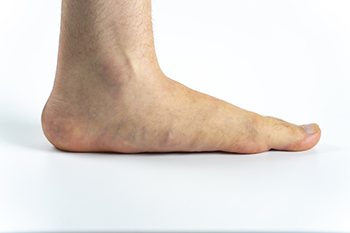Is There a Difference Between Flat Feet and Overpronation?

Flat feet and overpronation, although often seen together, are distinct conditions that can exist independently. Flat feet, also known as fallen arches, are characterized by the lack of an arch on the inside of the foot, resulting in the entire sole touching the ground. Overpronation relates to the dynamic movement of the foot during activities such as walking or running. Pronation is the natural inward roll and lowering of the arch when weight is placed on the foot. Overpronation means this movement is excessive, potentially leading to issues due to altered force patterns on the foot and leg. The collapse of the arch when standing can lead to excessive pronation while in motion. Correcting flat feet often involves both raising the arch when standing and controlling pronation during activities such as walking or running. Some individuals may have a normal arch, but still overpronate during high impact activities. Treatment and exercises for flat feet can sometimes overlap with those for overpronation. If you have either of these conditions, it is suggested that you make an appointment with a podiatrist who can examine your feet and gait patterns to determine whether you have a problem requiring treatment.
Flatfoot is a condition many people suffer from. If you have flat feet, contact one of our podiatrists from Graff Foot, Ankle and Wound Care. Our doctors will treat your foot and ankle needs.
What Are Flat Feet?
Flatfoot is a condition in which the arch of the foot is depressed and the sole of the foot is almost completely in contact with the ground. About 20-30% of the population generally has flat feet because their arches never formed during growth.
Conditions & Problems:
Having flat feet makes it difficult to run or walk because of the stress placed on the ankles.
Alignment – The general alignment of your legs can be disrupted, because the ankles move inward which can cause major discomfort.
Knees – If you have complications with your knees, flat feet can be a contributor to arthritis in that area.
Symptoms
- Pain around the heel or arch area
- Trouble standing on the tip toe
- Swelling around the inside of the ankle
- Flat look to one or both feet
- Having your shoes feel uneven when worn
Treatment
If you are experiencing pain and stress on the foot you may weaken the posterior tibial tendon, which runs around the inside of the ankle.
If you have any questions please feel free to contact our offices located in Plano, Dallas, Prosper, Allen, Irving, Garland, Frisco, and Coppell, TX . We offer the newest diagnostic and treatment technologies for all your foot and ankle needs.
